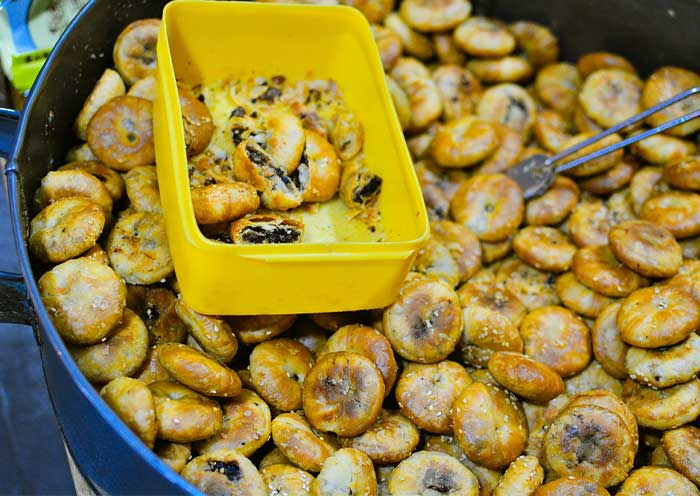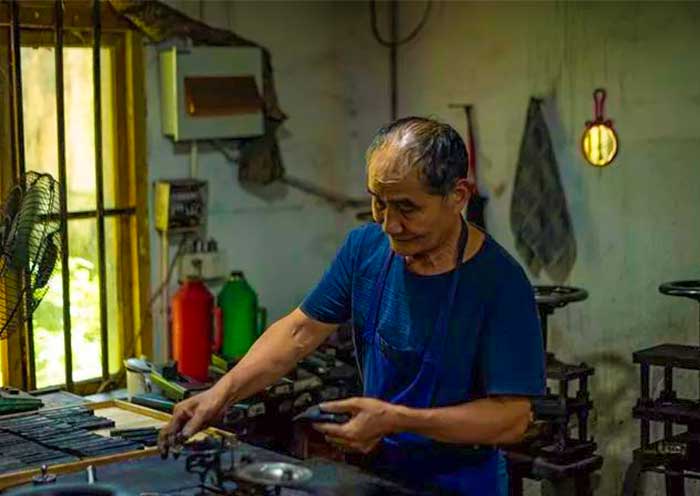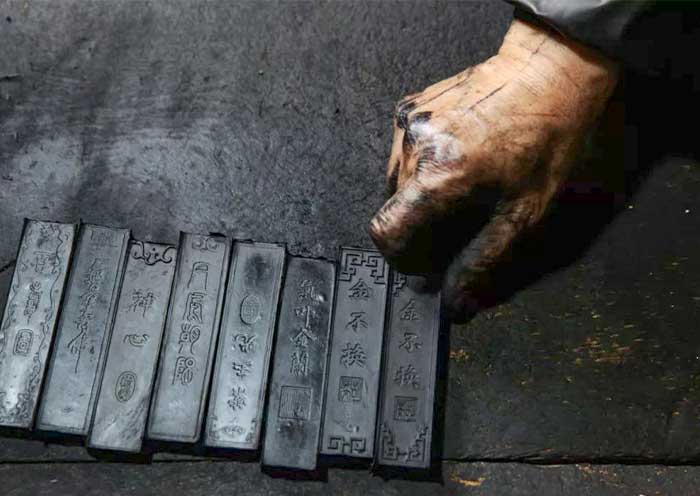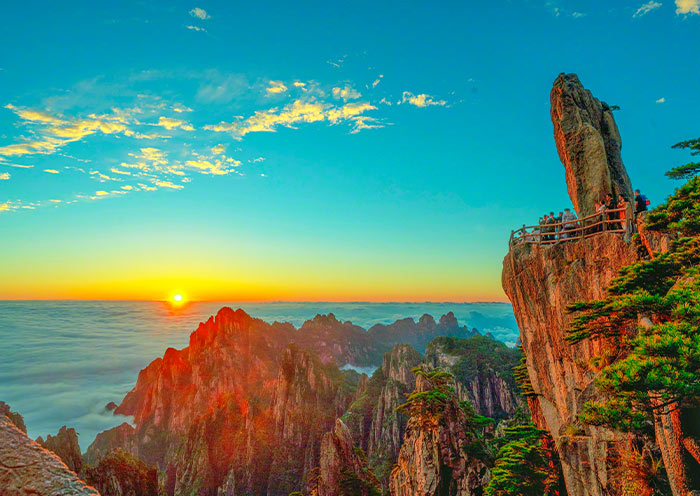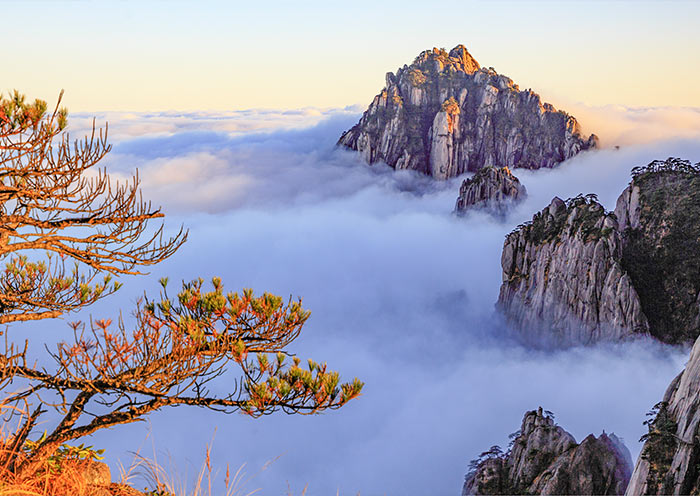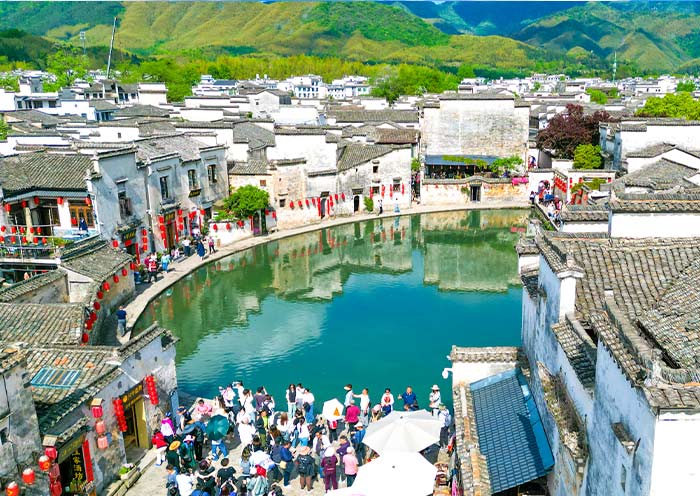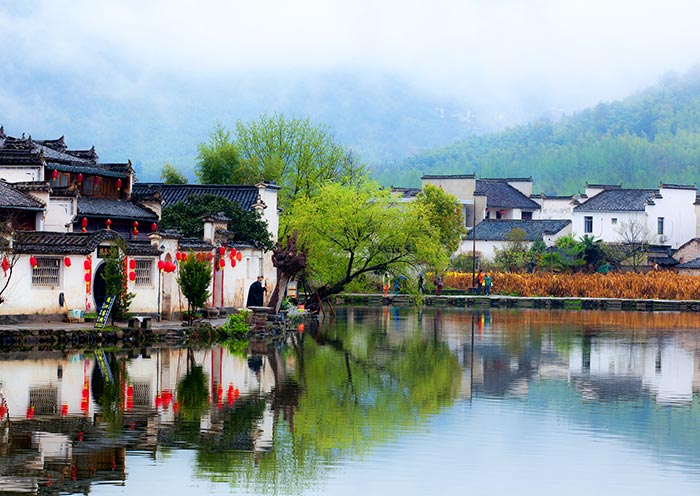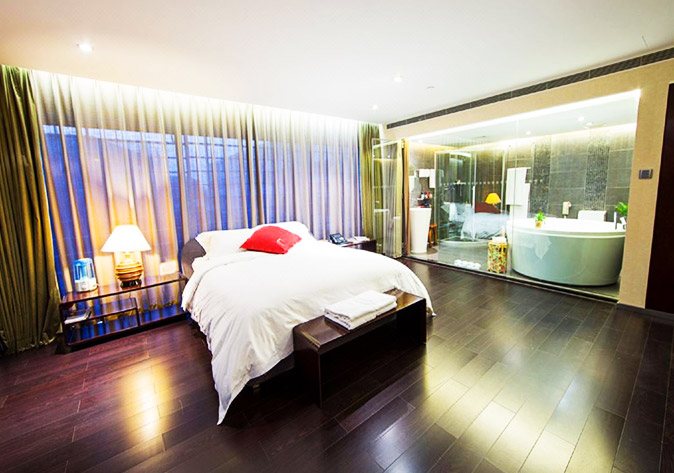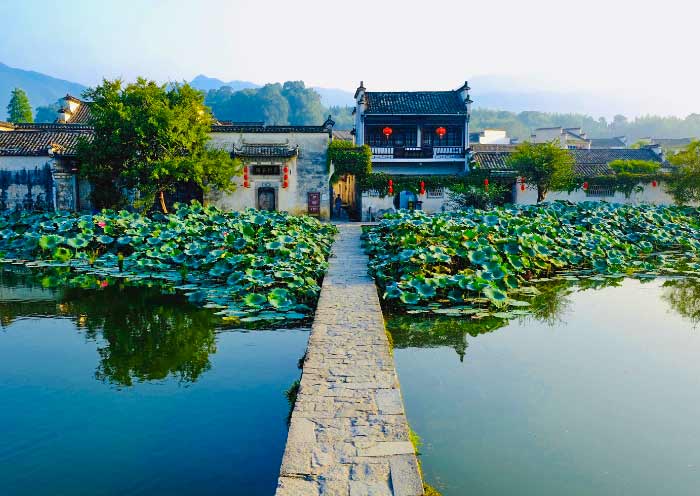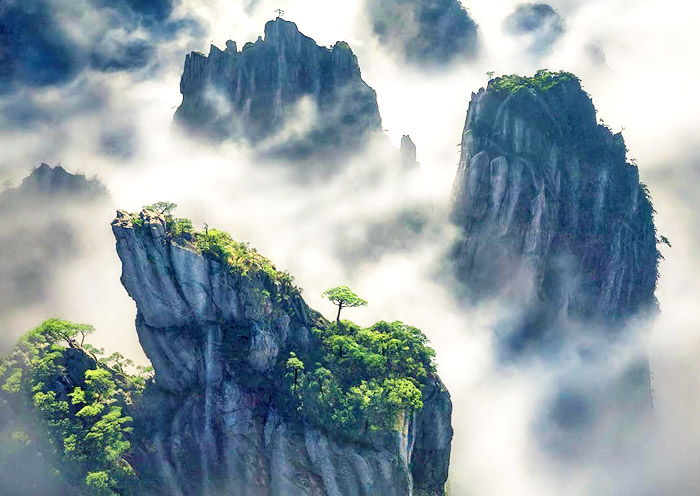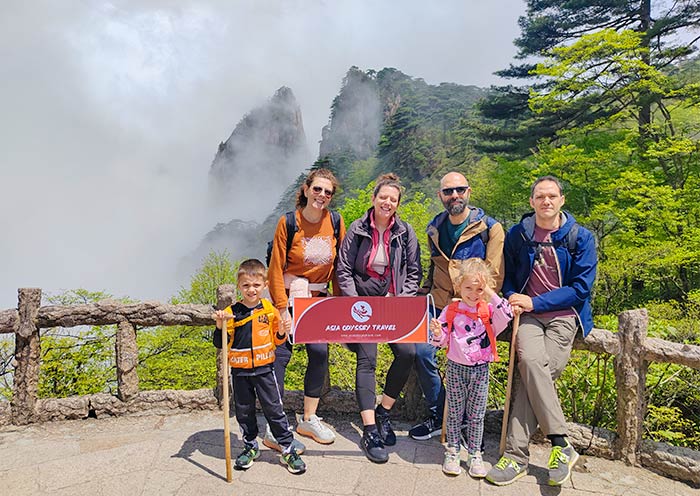There are many ancient villages in China, while the ancient villages in southern Anhui have their own unique tradition. The ancient villages in southern Anhui are predominantly designed in the Huizhou architectural style, a school of design that showcases intricate wood carvings, walls of pristine white, and roofs of contrasting black tiles. The “Horsehead” walls, named for their shape, are another characteristic feature. These architectural elements come together to create scenes that seem plucked right from a traditional Chinese ink painting- serene, timeless, and profoundly beautiful.
In addition to the architecture, Huizhou villages often have a rich history tied to the Huizhou merchants, one of the three major commercial groups in ancient China, especially successful during the Ming and Qing Dynasties. Upon amassing wealth, they often returned to their hometowns to build luxurious mansions, ancestral halls, and archways, contributing to the family-residing village's architectural and cultural richness.
Today, you will visit one of the most representative Huizhou villages - Hongcun. It is renowned for its well-preserved ancient architecture and layout from the Ming and Qing Dynasties, designated a UNESCO World Heritage Site in 2000. Often described as a "village in a Chinese painting," Hongcun has become a magnet for photographers and artists, eager to capture its idyllic scenery and architectural grace.
Established in the Song Dynasty, Hongcun Village is over 900 years old. The lay of the Hongcun was remodeled according to geomantic (feng shui) ideas. It is common to see Hui-style villages often situated near mountains and water sources, aligning with the people Huizhou’s belief that harmony with the natural environment promotes the well-being and prosperity of the villagers. In the embrace of southern Anhui's rolling hills, Hongcun unfolds like a living ox-shaped tapestry. Leigang Hill forms its majestic “head,” crowned by two ancient trees as “horns.” The Moon Pond forms its “heart”, and South Lake is the “belly.” Four timeworn bridges stand as the ox's “feet,” t, straddling the tranquil Jiyin stream, while a meandering canal - the village's “intestines” - adds a flowing cadence to daily life. All these elements converge at the serene South Lake, a natural mirror that not only reflects the village's ethereal beauty but also anchors its feng shui harmony.
Step inside and you are led through labyrinthine cobblestone streets, meandering like poetic verses. These lanes, narrow yet inviting, seem to whisper the stories of generations past as they guide you through the village's “body,” a collection of white-walled, black-tiled Hui-style buildings. Here, 103 ancient buildings from the Ming and Qing dynasties, and 34 buildings from the Republican era are preserved. The villagers uphold time-honored traditions and customs, living a pastoral life that feels as if suspended in another era. The most beautiful sites are the expansive South Lake and the crescent-shaped Moon Pond. These tranquil bodies of water act as natural mirrors, capturing the timeless beauty of ancient bridges and classic Huizhou architecture as if they were scenes on a painted scroll. It is especially beautiful during the season when lotus flowers are in full bloom.
The ancient inhabitants of this village have left a rich legacy of material and spiritual wealth. On the north bank of Southern Lake, you will find South Lake Academy, a private ancient school that served the village, and was a good architectural representative of the family academies of Huizhou. Scattered throughout the village are several mansions, courtyards, and ancestral halls, such as Chengzhi Hall, Wang Ancestral Hall, Jingxiu Hall, Jingde Hall, and Lexu Hall. Among these, the Wang Ancestral Hall stands as the largest and most well-preserved family shrine in the village. A portrait of the Wang family's grand matriarch hangs on the left wall inside the hall - Hu Zhong who designed and led the construction of Hongcun's water management system, shaping the village into what it is today. Chengzhi Hall, founded by a salt merchant, is the largest private residence in Hongcun and is often referred to as the "Folk Forbidden City." The mansion is renowned for its intricate Huizhou "Three Carvings," which include brick carvings, wood carvings, and stone carvings. Among these, the wood carvings are particularly exceptional. Some are even gilded, exuding magnificence and opulence that testify to the wealth and prestige of its original owners.
Then, it is time to conclude your 3-day Huangshan Classic Tour. Your guide will accompany you to the airport or train station for your flight or high-speed train to your next destination. (Tip: It is suggested to leave after 14:00)
Thank you for choosing Asia Odyssey Travel for your China tour, and we are always here working for you and hope to see you again for your next trip to China/Asia. Safe journey!






